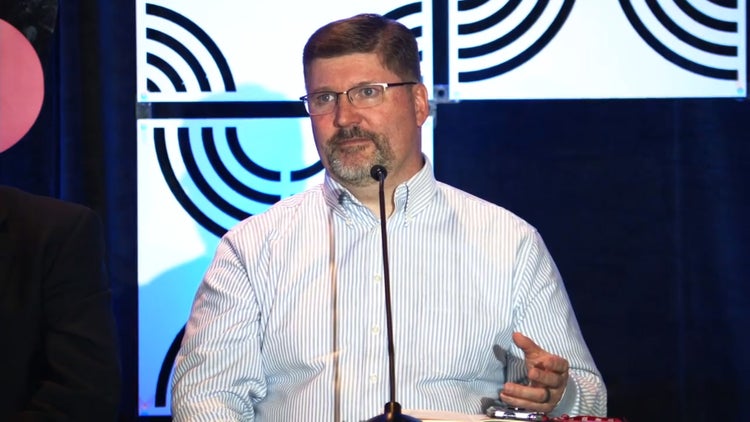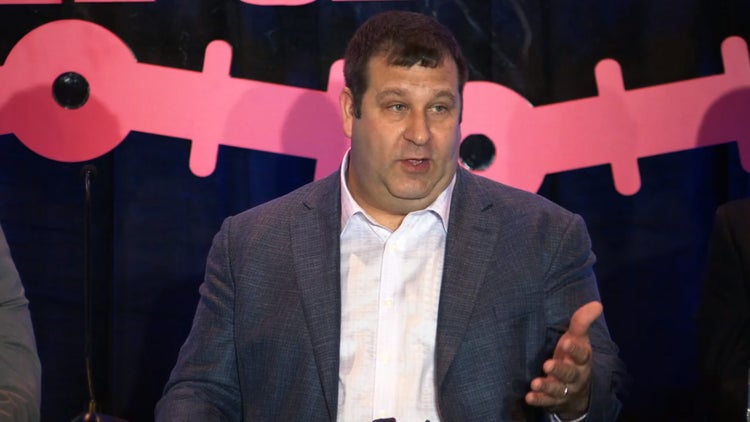How to Produce a Pipeline of Skilled Maintenance and Operations Employees Who Stick Around
Applying the Keys to Successful Training Programs
- Insights
- September 11, 2023

According to a recent Forbes article, one of America’s biggest manufacturing challenges is hiring and keeping skilled workers.
At Intralox, we see this problem across the globe. A generation of experienced workers has been lost to retirement and turnover—and with them, the apprenticeship system that trained new workers.
Despite the growing adoption of automation, human workers are still needed for manufacturing jobs, particularly in food processing. Automated systems require today’s workers to have skills that didn’t exist yesterday. The result? A shortage of quality employees who can operate and repair modern industrial machinery.
Training is essential for a future-ready workforce. When people are properly trained, they feel more confident and are more likely to stick around. Plus, enhancing the skill sets of those who work with conveyor systems helps minimize unscheduled downtime, reduce foreign material risk, and optimize food safety.
In a recent LinkedIn survey, 94% of employees said they would stay at their jobs longer if they were offered the opportunity to upskill.
But developing training programs that do more than just “check the boxes” can be a daunting task. We gathered a handful of food industry leaders at NEXT 2023 earlier this year to discuss these challenges and share best practices.
Here are their keys to successful training programs.
Get Buy-in from Corporate and Plant Management
First, identify where the gaps are in training at your facility. Then, consider how you can connect those training needs with the company’s priorities and goals, such as reducing unplanned downtime. After that, it’s crucial to have upper-level management buy in when implementing training programs.
“When we focus on a plant that wants to build a training program, we start with the Plant Manager, Maintenance Manager, and Utilities Manager,” says David Patty, formerly with Tyson Foods, Inc. “This group has to be ‘bought in’ because they’re going to set the tone for what’s going to happen at their location. Management is the critical driving factor for sustainability. If you don’t have that top level buy-in, it’ll fizzle out."

Create a Growth Path with Multiple Learning Opportunities
Two panelists noted that their companies have instituted skill-based “levels” for maintenance staff members. Technicians—ranked from one to five, for instance—are incentivized to reach the next tier for a pay increase. When training is required as part of the advancement process, the correlation between upskilling and career development drives team members to progress and level up.
“We offer leadership opportunities to employees who are eager to move up, which usually involves training others,” says Cassie Adams with Wells Enterprises. “Instead of being the person out there wrenching on the equipment, they’re training people how to do it. That really makes people feel valued and that their skills are making a difference out on the floor.”
Brendon Russ with JLL Work Dynamics adds, “Having a training program where you can show that there is a ladder, a path of progression so they can move up in the organization and better themselves is usually a good motivator. And it shows something to the employees: that we understand that there are different levels with different competencies. We’re going to help you get from point A to point B, move up those levels, so you can go from a sweeper all the way up to the Lead E&I [Electrical & Instrumentation] Tech of the facility.”

What else can you do?
- Mentoring: If there are reliable, long-time employees on your staff, create a mentoring or shadowing program that connects those highly skilled team members with less experienced hires.
- Cross Training: Create opportunities for employees to learn skills and execute tasks performed by other staff members to develop your team.
- Fast Tracking: Ensure that your tiered system is flexible enough to fast track deserving employees. If a level four technician can demonstrate the skill set of a level six, make sure that person is promoted and paid what they’re worth.
I believe it’s a retention tool. When you have a good training program, it’s a way to retain your folks.
Former Associate Director, Maintenance and Refrigeration Training at Tyson Foods, Inc.
Identify “Champions” to Drive Change
We asked our panelists how food processors can lean on key suppliers and partners for support in developing the skills of maintenance and operations personnel.
Rich Grasser with Taylor Farms says, “We pair up with our key suppliers and do a ‘Train the Trainer’ with the company, and it’s worked very well. We’ve partnered a lot with Intralox, and we’ve done a lot of CFS [Commercial Food Sanitation] trainings. We’ve put sanitation, production, and maintenance together. Usually that’s like gas, oil, and water. It doesn’t work. We found a way to make it work. CFS and Intralox have helped us do that.”
“We’ve seen a $50,000 cost reduction in the last six months on belting. So, it’s a huge win for us. We’re relying on the experts to tell us how to service their piece of equipment, and it’s helped tremendously. Uptime is great. Parts usage is down. We’re starting up on time. Throughputs are way up. Morale is better. And the staff feels like they’re part of the team because they got to go to a training.”

Rob Rogers with METTLER TOLDEDO explains, “We call our program ‘Champion Training’ where an organization will adopt a few champions that come to our facility. We like to conduct sessions at our facility where our customers’ personnel can come to training and they can go back and radiate what they’ve learned throughout their organizations.”
“And we’ve seen a lot of success from our customers with staff who’ve been trained by our service technicians. When a customer’s trained maintenance guy calls our service hotline to speak with our technician, they’re often able to solve the problem over the phone—as opposed to having someone fly out there and resolve that problem on-site. So, there’s a lot of time savings there. We’re huge advocates of empowering our customers to service their machines themselves so they can keep their production and efficiencies where they need to be.”
Want to hit your own Intralox “Easy Button” to support your training and business goals? Contact Intralox Customer Service to get started.
Special thanks to the experts who shared their insights and experiences on this panel discussion at NEXT 2023:
- Cassandra (Cassie) Adams: Training and Development Program Manager at Wells Enterprises
- Rich Grasser: Engineering, Facilities, and Maintenance Director at Taylor Farms
- David Patty: Former Associate Director, Maintenance and Refrigeration Training at Tyson Foods, Inc.
- Robert (Rob) Rogers: Senior Advisor for Food Safety and Regulations at METTLER TOLEDO
- Brendon Russ: Lead, Americas Reliability & Asset Management Engineering Services, Americas at JLL Work Dynamics
